#Brachychampsa
Explore tagged Tumblr posts
Text
Prehistoric Planet Croc Ideas
So this was a thing I did on Twitter in anticipation of Prehistoric Planet. Obviously crocs (in this case meaning crocodylomorphs) were a pretty massive part of earth's fauna during the late Cretaceous, and seeing as the first season featured NONE I came to speculate which taxa could hypothetically make an appearance. Now part of the challenge for myself was to come up with a new, interesting contender every day in anticipation of the show's release, each based around the confirmed episides we had and restricted purely to taxa from the Campanian and Maastrichtian. While it took a lot of energy, I did manage to do so. Hell, halfway through they dropped the reveal of Simosuchus, which I had saved for later.
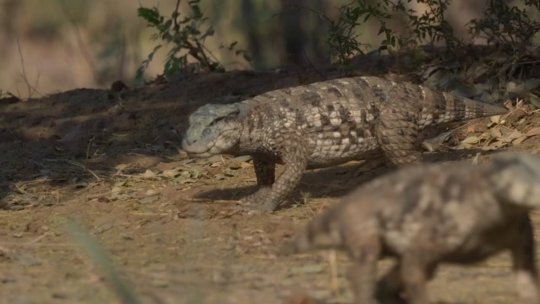
Obviously we didn't get much still, but I'll regardless post my list of candidates and ideas here, perhaps third time's the charme for a lot of these (tho for convenience I'm still ordering them by S2s episode titles). I'll also try to break them apart roughly by biome, starting with islands. PS: I'd love to hear which crocs people would have loved to see themselves. Any on this list or stuff I didn't even mention? Let me know I'm curious.

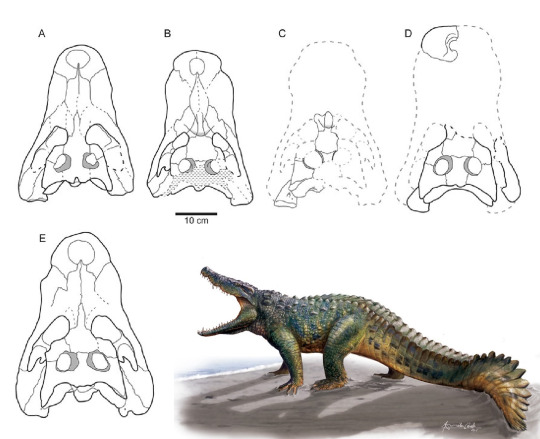
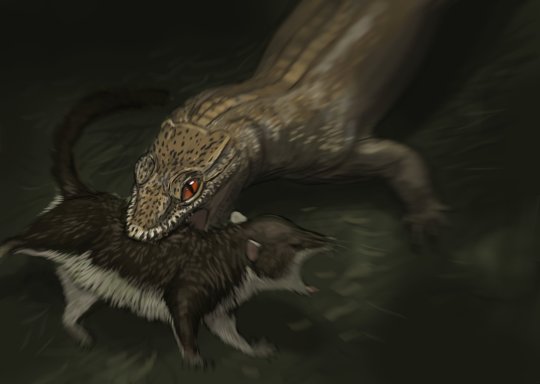
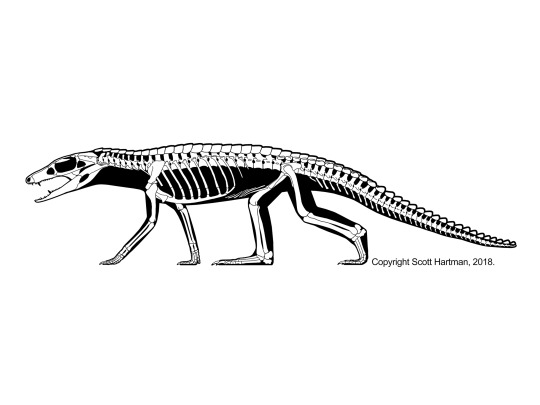

We got a shit ton of island crocs from the Cretaceous actually, which you can broadly divide into two categories. The crocodiles of the European archipelago as seen in the top row. Featuring the small, possibly shellfish eating Acynodon (art by Adramelech89), the incredibly widespread Allodaposuchus which did have some possibly semi-terrestrial forms (art by Alejandro Blanco, Aina and Agnès Amblás) and Aprosuchus, a tiny terrestrial critter from Hateg (art by @knuppitalism-with-ue). They already give a nice diversity between tiny durophages with blunt snouts, large, more traditional crocs and lanky land species.
The other island category concerns Madagascar, which had a lot of attention in season 2. Discounting Simosuchus, we got Araripesuchus tsangatsangana (art by Scott Hartman) and Mahajangasuchus (art by Mark Hallet). Both are really cool. The former is yet another smaller terrestrial species that may not actually be part of Araripesuchus, while the later is a massive, 4 meter relative of the famous Kaprosuchus that took to the water independently from all other crocs and has been nicknamed "Hippo croc" for its weird skull. Really I'd have loved to seen an episode entirely dedicated to this place.
Next up we had the badlands episode, which oh boy has a lot of contenders from the clade Notosuchia. Brace yourself.
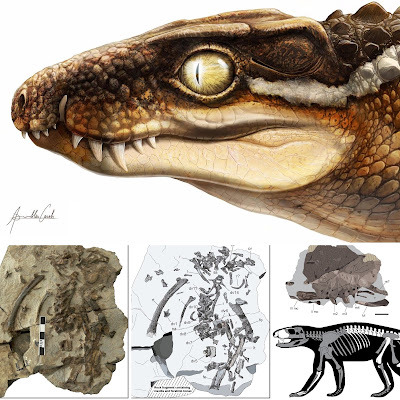
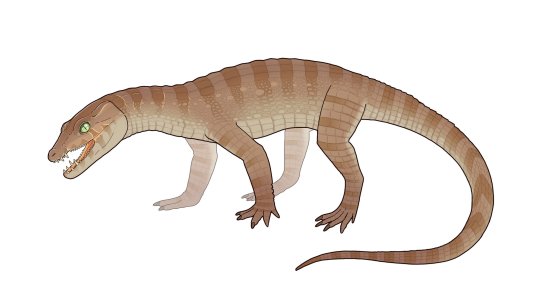

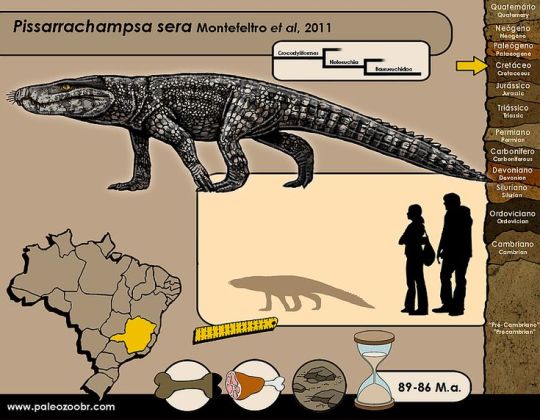

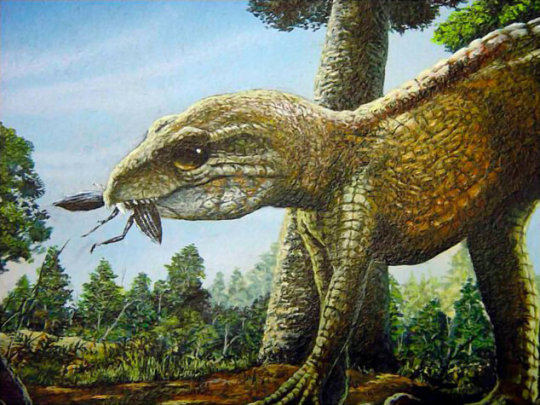
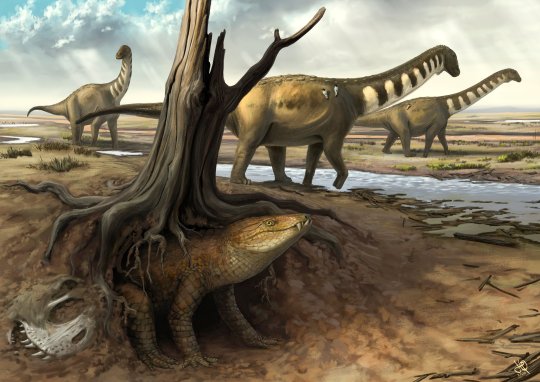

Here again I could split these in two categories. The first is just general badland taxa. There's Ogresuchus for example, from Spain's Tremp Formation (art by Aina and Agnès Amblás). A relatively small sebecid found in a sauropod nesting site. And we all know what PhP does with baby sauropods. Or the long-necked Gobiosuchus (art by @yoofilos) from Mongolia, which may look like its related to the other ones in this category but actually is a far more ancient type of croc.
The far bigger group concerns South America's Notosuchians. ALL OF THESE are from the Bauru Group, with some even from the same single formation. You got Stratiotosuchus (again by Joschua Knüppe), a large terrestrial baurusuchid that filled the nische of mid sized carnivore in an environment shared by sauropods and abelisaurs. There's Pissarrachampsa (by Felipe Alves Elias), another baurusuchid I decided to feature because we have evidence of a nesting site that shows they only had few eggs. A great opportunity to show their tender side. Uberabasuchus (justin_an74), part of the bizzarly proportioned peirosaurids. Adamantinasuchus (by Deverson da Silva), a small, lanky Notosuchian and of course the heavily armored omnivore Armadillosuchus (by the ever talented Júlia d'Oliveira). Hell you could do a full episode just on the foodweb of the Bauru Group (Godoy et al. 2014).
Then there's swamps, which I'll just use to dump all the crocs that don't fit into the other categories.
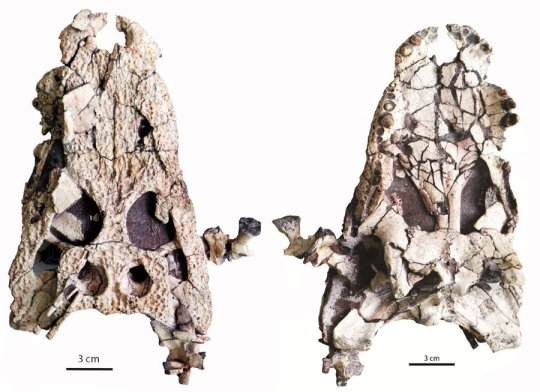


As you'd expect, freshwater would be ideal for crocs with a more traditional semi-aquatic lifestyle, here represented by three forms. Jiangxisuchus (image by Li et al. 2014) is a paralligatorid, which are tiny crocodilians from the Cretaceous and Paleogene of east Asia. We honestly don't know what they are, some say alligator relatives, others say they are closer to crocs. But its small and cute. Then there's Roxochampsa (artist of the model I couldn't find), which looks suspiciously crocodilian but is actually a relative of Uberabasuchus from the badlands, hell it appeared in the same formation. Still, I reasoned that I'd throw it into this category because I already proposed so much for badlands (none of which came true but hey). And then there's Denazinosuchus (art by Andrey Atuchin). Again it looks deceptively like a modern croc, but is actually the last remnant of the goniopholids, crocodyliforms that were prominent animals in the Jurassic and early Cretaceous. It could have brought both taxonomic diversity nad highlighted croc resilience till the end.


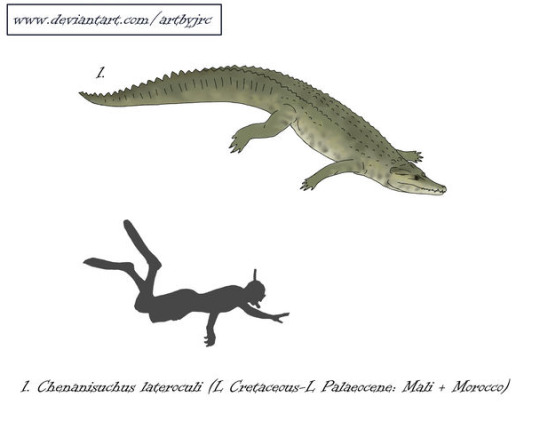
When it came to picking out crocs for Oceans, it got tricky. Obviously season 2 tried to differentiate itself by being set more in the open ocean, not the coast, and true pelagic crocodiles weren't around by the end of the Cretaceous. So I had to settle for coastal animals. There's Sabinosuchus (Schiller II et al. 2016), a cousin to Sarcosuchus and, like Denazinosuchus, one of the last of its lineage. Also its from Mexico which is rarely talked about for its fossils. Rhabdognathus (Ghedoghedo) is a distant cousin, a slender snouted dyrosaur. Unlike pholidosaurs, dyrosaurs actually did really well after the KPG impact and spread around a lot, living way into the Eocene. And finally Chenanisuchus (art by artbyjrc), which like Rhabdognathus was found both before and after the impact that killed the dinosaurs.

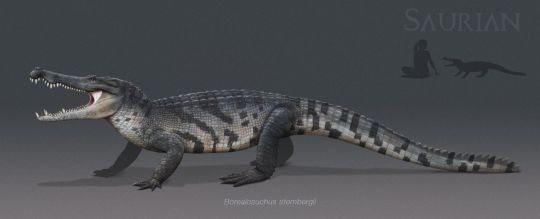
And the final two I shall talk about, both of which I thought/hoped would appear in the North America episode. Again, there's certainly overlap, both would have just as much fit into swamps, while many others would have also suited North America. Regardless, here's Brachychampsa (Tom Parker) and Borealosuchus (Chris Masna), both iconic animals from the Hell Creek Formation. One closely allied with alligators and caimans, the other more basal with a head-shape more similar to todays crocodiles.
Now obviously there'd have been a lot more. Part of the challenge to myself was to try and be as diverse as possible, rather than just listing 10 different baurusuchids I went with only two, tried to include as much of the world as possible, etc.... There's also the fact that some really awesome taxa, Titanochampsa, Brachiosuchus and Eurycephalosuchus, all incredibly unique or interesting, were published too late to have been considered for the show. And now, in hinsight, we obviously know that with the exception of Simosuchus none of them made it in. Which is a shame, but maybe next time.
#prehistory#palaeblr#crocodile#paleontology#long post#prehistoric planet#prehistoric planet 2#borealosuchus#brachychampsa#simosuchus#pissarrachampsa#stratiotosuchus#gobiosuchus#ogresuchus#uberabasuchus#roxochampsa#armadillosuchus#adamantinasuchus#jiangxisuchus#denazinosuchus#sabinosuchus#rhabdognathus#chenanisuchus#mahajangasuchus#araripesuchus#acynodon#allodaposuchus#aprosuchus
159 notes
·
View notes
Text

Day 23: KPG Extinction
During the darkness of cloudy weather, an alligatorid Brachychampsa is struggled to tearing a huge flesh dead alamosaurus after a collapsed itself due high starvation.
#my art#myart#dinosaur#paleoart#dinosaurs#my drawings#dinosauria#crocodyliformes#alligator#alligatoridae#caiman#croctober#crocodylomorpha#pseudosuchia#archosaurs#alamosaurus#titanosauria#sauropod#toned tan#sketchbook#artists on tumblr
10 notes
·
View notes
Text

Caenagnathids are a family of distinct oviraptorosaurs with longer, lighter, toothless jaws and more slender, gracile anatomy than Ovoraptorids. Until the discovery of Anzu wyliei, remains of Caenagnathids were scarce and fragmentary, especially in North America. But then, in 2014, this giant North American Oviraptorosaur was described. Originally nicknamed the “chicken from hell”, Anzu was instead named after a fire-and-water-breathing bird monster from ancient Sumerian mythology. And, resembling a 3.5–3.75 meter (11.5–12.3 ft) long and 200–300 kilogram (440–660 lb) parrot with a high crescent-shaped crest on its head, Anzu certainly earned its name.
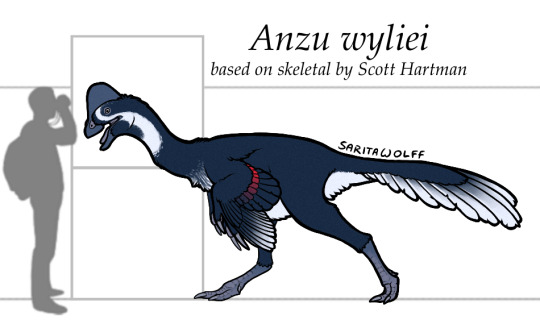
The oviraptorids were smaller and stockier than this tall giant, however, Anzu’s beak was not as heavily constructed as theirs. Like most ovoraptorosaurs, it was likely a herbivore or omnivore, using its beak to crack open hard shells and nuts. And, unlike its desert-dwelling cousins, it lived in lush forests and floodplains, likely with a different set of adaptations for this environment. Anzu’s large crest, the largest of all oviraptorosaurs, was actually quite thin and light, likely used for social signaling and to attrract mates.

Living in the North and South Dakota of the famous Late Cretaceous Hell Creek Formation, Anzu would have lived alongside many of the most familiar North American dinosaurs, including both species of Triceratops, Edmontosaurus annectens, and Tyrannosaurus rex. Aside from the Big Three, Anzu also lived alongside ankylosaurs like Denversaurus, pachycephalosaurs like Pachycephalosaurus, rarer ceratopsians like Torosaurus, and ornithopods like Thescelosaurus. Fellow theropods included Ornithomimus, Acheroraptor, Dakotaraptor, birds like Brodavis and Potamornis, and the slightly smaller caenagnathid Eoneophron. Azhdarchid fossils have been found here as well, possibly belonging to Quetzalcoatlus or a relative. Pseudosuchians lived here too, including Borealosuchus and Brachychampsa, as well as a large variety of turtles and mammals, at least one indeterminate mosasaur, and the choristodere Champsosaurus.

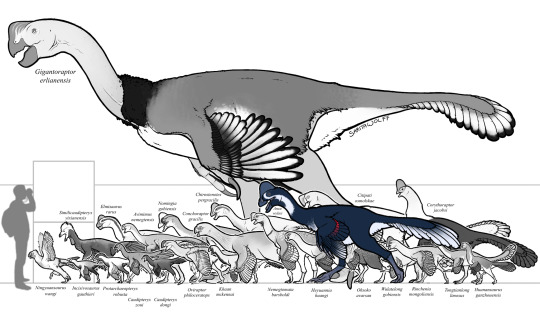
This art may be used for educational purposes, with credit, but please contact me first for permission before using my art. I would like to know where and how it is being used. If you don’t have something to add that was not already addressed in this caption, please do not repost this art. Thank you!
#Anzu wyliei#Anzu#Caenognathid#oviraptorosaurs#theropods#saurishcians#dinosaurs#archosaurs#archosauromorphs#reptiles#SaritaDrawsPalaeo#Hell Creek Formation#Late Cretaceous#United States of America
7 notes
·
View notes
Text




I dunno about you guys, but with this year possibly being a big one for paleomedia as a whole (A new Jurassic World movie, ON TOP of two big budget paleodocs being the main examples), perhaps we could FINALLY see PHP return for a third season. While I'm not gonna go ramble on about how I think this hypothetical Season 3 will be the last one to close out the series (along with cementing a trilogy in the same vein as Planet Earth), I am gonna bring up a little thought experiment that me and some of my Discord buddies came up with and discussed.
I've heard quite a few folks say that they want PHP to move away from the Maastrichtian epoch from the end of the Cretaceous, but I've also seen people mention how this particular chunk of geologic time still has plenty of usable taxa to put in the show, even after 2 entire seasons' worth of species. Not only are many dinosaurs still left on the table, so are many non-dinosaur animals as well; Pterosaurs, marine reptiles, mammals, fish, birds, etc. This is just a quick lil' list to point out the candidates that could appear in future episodes, as a huge part of me feels like the show is gonna remain within the Maastrichtian for the time being. And for a funny coincidence, the amount of animals that I was able to put together between my own research and suggestions from?
SIXTY. SIX.
As in, the geologic time that the entire show takes place in ("Planet Earth, 66 million years ago" and all that). You can imagine the surprise that I had when I accidently reached that number.
Anyhoo, let's hop to it
Ankylosaurus
Gallimimus
Dryptosaurus
Ocepechelon
Arambourgiania
Denversaurus
Thescelosaurus
Rhabdodon
Shantungosaurus
Coahuilaceratops
Leptoceratops
Regaliceratops
Alaskacephale
Ampelosaurus
Noasaurus
Alioramus
Falcatakely
Torosaurus
Patagonykus
Epapatelo
Mahajangasuchus
Zarafasaura
Gavialimimus
Champosaurus
Habrosaurus
Didelphodon
Bharattherium
Purgatorius
Cretalamna
Stratodus
Pycnonemosaurus
Maip
Stegorous
Thalassotitan
Ajnabia
T. mcraeensis (As in, the new Tyrannosaurus species described in 2023)
Khinjaria
Eoneophron
Patagomaia
Augustynolophus
Plotosaurus
Pleisotylosaurus
Tylosaurus
Hydrotherosaurus
Morenosaurus
Anzu
Bonnerichthys
Sinoceratops
Zhuchengtyrannus
Acheroraptor
Saurolophus
Thoracosaurus
Borealosuchus
Armadillosuchus
Saltasaurus
Palaeosaniwa
Avisaurus
Potamornis
Brachychampsa
Enchodus
Alphadon
Adocus
Serpentisuchops
Charonosaurus
Asteronis
Sahonachelys
Like I said; 66 different species just WAITING for their time to shine. And given how it's almost been 3 years since the show originally came out, the same timeframe that S1 had between 2019 and 2022 could also apply to this hypothetical third season (and this theory is helped even more by the idea that S2 was originally material that was scrapped by S1).
We've got a full year to wait and see if we get anything new with this show, so we've got plenty of time to speculate before we find out anything.

Many thanks to my Discord peeps for coming along for this fun thought experiment. You guys rock!
2 notes
·
View notes
Photo

Two male quetzalcoatlus's fight over a freshly caught brachychampsa while scaring away a female ornithomimus who has come for a drink.
#my art#dinosaurs#pterosaurs#quetzalcoatlus#Brachychampsa#ornithomimus#paleontology#paleoart#paleoillustration#Illustration#ferns#forest#swamp#crocodilian#prehistoric
933 notes
·
View notes
Photo





Other creatures of Saurian
1. DePalma’s Ornithuran
2. Borealosuchus sternbergii
3. Brachychampsa montana
4. Chamops segnis
5. Palaeosaniwa sp.
#Saurian#Video game#Hell Creek#Hell Creek Formation#DePalma's Ornithuran#Borealosuchus#Borealosuchus sternbergii#Brachychampsa#Brachychampsa montana#Chamops#Champs segnis#Palaeosaniwa#Palaeosaniwa sp.#Bird#Crocodilians#Lizards#Prehistoric#Mesozoic#Cretaceous#Extinct#Info#Information
103 notes
·
View notes
Photo

Something I did for Saurian some time ago. Full-ress here: https://www.artstation.com/artwork/43xO4
Me elsewhere: Instagram - Deviantart
15 notes
·
View notes
Text


#Archovember Day 25 - Pachycephalosaurus wyomingensis
I try to include a Pachycephalosaurid in every Archovember, but I have been dancing around drawing the Big One. Until now.
From Late Cretaceous North America, Pachycephalosaurus wyomingensis was a bipedal herbivore that may have also eaten insects and meat due to its bladelike front teeth. It is of course most well known for its extremely thick, domed skull. Initially, it was thought that these skull domes were used for intraspecies conflict, and that males would headbutt each other in a matter similar to bighorn sheep and musk oxen. However, this hypothesis is more recently up for debate. The rounded shape of the skull and the orientation of the cervical vertebrae seem unfit for the stress of direct head-butting. One study suggests that Pachycephalosaurs would use their skulls to strike rivals in the flank, as their broad torsos would have protected their vital organs. Even so, histological studies have shown that Pachycephalosaur domes were made of a unique fibrolamellar bone that would have been able to heal injuries relatively quickly. So head-on headbutting seems to still be a possibility.
Two other Pachycephalosaurids have been found in the Hell Creek Formation: Dracorex hogwartsia and Stygimoloch spinifer. These pachycephalosaurs were smaller and had flat skulls. But Dracorex and Stygimoloch have only been found as juveniles, and Pachycephalosaurus have only been found as adults. As they lived in the same time period and area, most paleontologists agree that Dracorex and Stygimoloch were different growth stages of Pachycephalosaurus, and that it would grow its domed skull as it matured. (Of note though is that all Stygimoloch specimens have been collected from the upper part of the Hell Creek Formation, and all Pachycephalosaurus’ were collected from the lower part. So Stygimoloch still may be it’s own species.)
Late Cretaceous North America was home to some of the most famous dinosaurs, so Pachycephalosaurus wyomingensis would have lived alongside many familiar faces. These include the hadrosaurid Edmontosaurus, ceratopsians like Triceratops, Torosaurus, Nedoceratops, Tatankaceratops, and Leptoceratops, ankylosaurians like Ankylosaurus, Denversaurus, and Edmontonia, the neoornithiscian Thescelosaurus, the dromaeosaurs Dakotaraptor and Acheroraptor, the ornithomimids Ornithomimus and Struthiomimus, the Caenagnathids Anzu and Leptorhynchos, and of course, the tyrannosaurid Tyrannosaurus rex. There were also many species of frogs, salamanders, fish, turtles, birds, mammals, at least two species of pterosaur, the choristoderan Champsosaurus, and crocodylomorphs like Borealosuchus and Brachychampsa.
14 notes
·
View notes
Link
Some extinct crocs may have been keen to eat greens.
An analysis of fossil teeth suggests that plant-eating relatives of modern crocodiles evolved at least three times during the Mesozoic Era, which stretched from roughly 252 million to about 66 million years ago, researchers report June 27 in Current Biology.
Today’s crocodiles are predominantly carnivorous, and have the simple, conical chompers typical of meat eaters. But in the teeth of their relatives of yore, “there is this tremendous diversity … that we don’t see today,” says study coauthor Keegan Melstrom, a paleontologist at the University of Utah and Natural History Museum of Utah, both in Salt Lake City.
Melstrom and his adviser, paleontologist Randall Irmis, studied CT scans of 146 teeth from 16 extinct types of crocodyliforms. (No living member of the group, which includes modern alligators and crocodiles, eats primarily plants.) A computer program treated the teeth like miniature mountains, analyzing their shapes and giving each tooth a score that captured its complexity.
In general, the most textured teeth belong to herbivores, while those of omnivores and carnivores are usually less complex. Elongated, sharp teeth help carnivores kill and eat their prey, but broader, bumpier teeth are more useful in tearing leaves and grinding up plants.
________________________________________________________________
Telling teeth
Among the group of reptiles that includes today’s crocodiles and alligators, the teeth of carnivores such as the modern caiman (left in these false color 3-D images) and the extinct Boverisuchus vorax (second from left) are simple and cone-shaped. The tooth of an extinct omnivore in the group (middle, Brachychampsa sp.) has more complexity. But teeth from two ancient herbivores (right two) have the most texture, an indication those ancient crocs ate mostly plants, researchers say.

CREDIT: K.M. MELSTROM AND R.B. IRMIS/CURRENT BIOLOGY 2019
________________________________________________________________
Comparing the fossil teeth with teeth from modern reptiles helped the scientists get a sense of what the ancient crocodyliforms likely chewed. Some of the fossil teeth were much bumpier than those of plant-eating reptiles alive today, including iguanas, suggesting that the chompers were also from predominantly herbivorous species. Other teeth looked specialized to crush bones, tear meat or eat insects.
The teeth of the suspected plant eaters “really stand out,” says Domenic D’Amore, a herpetologist at Daemen College in Amherst, N.Y. “Few studies have quantified these differences, and this study really shows how different [the teeth] are.”
Surveying the evolutionary family tree of ancient crocodyliforms, the researchers found that veggie-munching crocs appear to have evolved at least three times and perhaps up to six times during the Mesozoic.
Ancient crocodyliforms lived in freshwater and marine environments and on land, says Patrick O’Connor, an evolutionary biologist at Ohio University in Athens. This study starts to figure out the animals’ places in their ecosystems, he says.
Since plant-eating crocodyliforms lived in different kinds of environments, herbivory was likely an important eating strategy, Melstrom and Irmis say.
119 notes
·
View notes
Photo

Day 28 is the last day of the 2018 dinosaurs, and with it comes the tyrannosaur Dynamoterror in #51, dynamically terrorizing a Brachychampsa. Find the palettes here.
47 notes
·
View notes
Text

Another size comparisson so soon?
Here's Chrysochampsa, a brachychampsin caiman from the Eocene of North Dakota.
I didn't talk about it much when making my post about Aheskatanka because at that point I had not really looked much into it. But seeing as it was practically redescribed, I ended up giving its wikipedia page an overhaul as well.
It's fairly interesting. Among the larger crocodilians of the formation alongside an indetermined crocodyloid (similar to Borealosuchus), it was probably a generalist and one of the apex predators due to its size and the fact that the swampy habitat was not well suited for the early mammalian predators that had appeared by that point in time.
Interestingly its somewhat of a relic, as the study found it to fall into the new clade Brachychampsini, which is composed of almost exclusively Cretaceous animals (Albertochampsa, Brachychampsa and Stangerochampsa). Also interesting is that while the puny Ahdeskatanka is thought to have been a true alligator (family Alligatorinae), the larger Chrysochampsa was actually an early type of caiman.
Wikipedia: Chrysochampsa - Wikipedia The study: Full article: Crocodylian diversity during the early Eocene climatic optimum in the Golden Valley Formation of North Dakota, U.S.A.
#chrysochampsa#caimaninae#brachychampsini#golden valley formation#eocene#prehistory#paleontology#palaeoblr#pseudosuchia#alligatoridae#croc#gator#caiman#alligatoroidea#crocodilia
19 notes
·
View notes
Text
Saurian DevLog #47
Hey all,
We've been working really hard on getting the next patch out, as well as the art book so all of the team is in ultra-busy mode at the moment. Henry has some information for you on what is to come with regards to the patch and I thought I'd drop some science seeing as an interesting new paper just dropped that we got a first-look at.
Henry
The programming team has been busy working out the last bugs from the gradual ontogeny system implementation, as well as some other longer-standing ones. After some last-minute sprints, we're happy to say it's ready! Patch notes can be found here - please let us know if you encounter any issues. Otherwise, enjoy!
Tom
A bit ago we were contacted by palaeontologist Mike Lee, asking if they could use our Thoracosaurus render in the press release of a new paper he had in the works featuring this animal. Always happy to have our art used for sci-comm, we said yes and Mike was kind enough to send us a pre-print of the paper in question. It turned out to be a pretty cool study, and had some implications for us which I thought would be interesting to discuss. Seeing as it has now been published I thought I'd talk about it here today.
To be clear, it won't effect how the animal will appear in game, but I did have to re-write the profiles for all our crocodylomorphs in the art book and I will have to modify the encyclopedia entries as well.
Thoracosaurus is a genus of large (5m or more) marine crocodylomorph from the late cretaceous of North America (including Hell Creek) and Europe. Since it was first discovered, Thoracosaurus has been considered an early member of the gharial lineage, with many similar aspects of the skeleton indicating this might have been the case. Computational phylogenetic analysis - computer run analysis that hypothesise the relationships of organisms - also consistently came to the same conclusion.
Borealosuchus is another crocodylomorph from Hell Creek that sometimes comes out as close to gharials, and sometimes in other positions close to the base of living crocodilians.
Traditional morphological studies had found gharials to be the earliest branching group of crocodylians. This was consistent with the 72 million year age of the earliest species of Thoracosaurus. however, new relationships and divergent dates received from molecular studies did not, with gharials being a reletively young group (40 Ma) more closely related to crocodiles than alligators. In this scenario, Thoracosaurus appears far before when gharials are supposed to have diverged from crocodiles.
This is where the new study by Mike Lee and his colleague Adam Yates comes in. They found that when running extremely complete phylogenies taking molecular, morphological and fossil age data into account, this disparity was resolved.
The inclusion of data related to age gaps between groups (tip-dating methodology) proved to be the difference, as without these methods the relationships came out similar to previous studies. The inclusion of tip-dating Bayesian approaches found Thoracosaurus and Borealosuchus to not be related to gharials at all, but out side of crocodylia. The position of gharials here agrees with molecular approaches, being young and close to crocodiles. This means than the gharial-like features of Thoracosaurus are all convergently evolved, probably as adaptions for catching fish.
So what does this mean for us, on a surface level? Well probably not a lot in terms of appearance, behaviour and ecology. What it does mean is than both Thoracosaurus and Borealosuchus are no longer crocodylians! They are stem-crocodylians and each other's closest reletives. So our crocodylian count in Saurian has dropped from 3 to 1, with early alligatoroid Brachychampsa being the only one left.
61 notes
·
View notes
Text
my pr self insert is silver and also has a brachychampsa as their zord and it’s great
0 notes
Text
in fairness I talked briefly with Adam Yates who questions the position of Orientalosuchina within alligatoroids. However even without those that wouldn't change the fact that alligatoroids were already a thing prior to KPG (see the tags for examples)


Yesterday a new species of alligatoroid was published, the small yet broad snouted Eurycephalosuchus ("broad-headed crocodile"). I love this little guy already. Discovered in southern China, this animal lived sometime during the Late Cretaceous, likely the early Maastrichtian. It was a member of the Orientalosuchina, a group of early alligator relatives that lived during the Cretaceous and Paleogene in East Asia, primarily China but also Vietnam. Although there is some crushing going on with this skull, its relatively minor. The authors suspect that uncrushing the skull would only add 5mm to its length, so this bizarre snub-nosed appearance is pretty much what this animal would look in life. Whats also fun is that the same excavation yielded a second croc, an indetermined brevirostrine (which basically means it could be a crocodile-relative or an alligator-relative) of much larger size. This begs the question, how big is that? We don't get precise estimates, but its said that the "big" one is similar in size to a Chinese Alligator (which get to about 2 meters) and its also said that Eurycephalosuchus is "the smallest orientalosuchine based on skull length". So that all basically says its pretty damn small. Well I will try to put together an uncrushed recon of the skull and a proper full scale size comparison eventually, but until then. Have this:

264 notes
·
View notes
